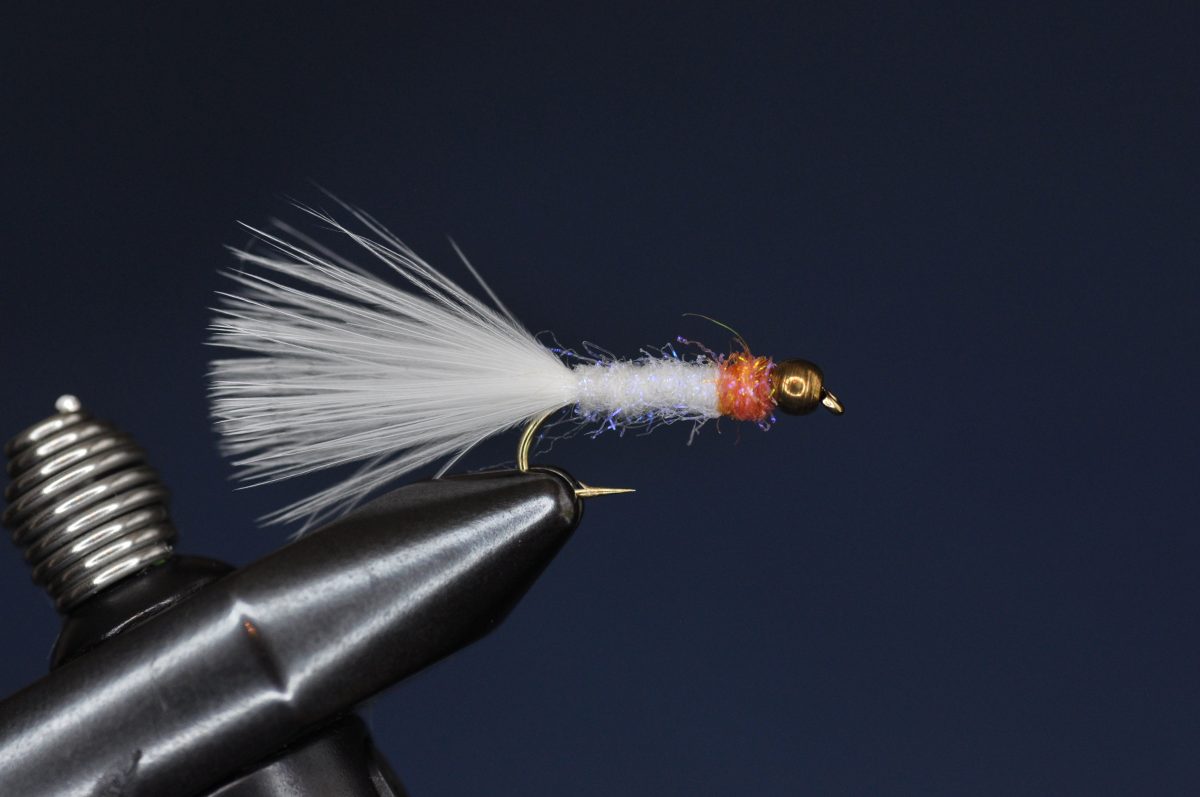
Looking for something else?
Try one of these!
The Fluff Butt Crappie Fly Step-by-Step
Targeting crappie on the fly has long been at the back of my mind, but never truly moved to the forefront given Louisiana’s abundant bass and saltwater offerings. That changed, however, in March of 2020 as an unexpected 14″ Sac au Lait came to net one evening while taking a break from fly fishing to spin fishing for bass.
Crappie now on the brain, I turned to the fine tyers on the FlyFlasher app for recommendations. Among the many excellent options presented was a simple crappie “jig” consisting of Marabou and Ice Dub. Similar to the Marabou and Chenille Fluff Butt crappie fly favored by many folks in Louisiana, I decided to give this recommendation as well as a few other Fluff Butt variations a try.
| Materials | ||
|---|---|---|
 3x-long nymph hook (Size 10 or 12) 3x-long nymph hook (Size 10 or 12) |  70 Denier (White) 70 Denier (White) |  Brass or Tungsten (Sized to match) Brass or Tungsten (Sized to match) |
 Marabou (White) Marabou (White) |  Hareline Ice Dub (White or Pearl) Hareline Ice Dub (White or Pearl) |  Hareline Ice Dub (UV Shrimp Pink) Hareline Ice Dub (UV Shrimp Pink) |
Disclosure: This post contains affiliate links. A small commission may be paid for purchases made through these links.
The Fluff Butt Crappie Fly Step-by-Step Tying Instructions


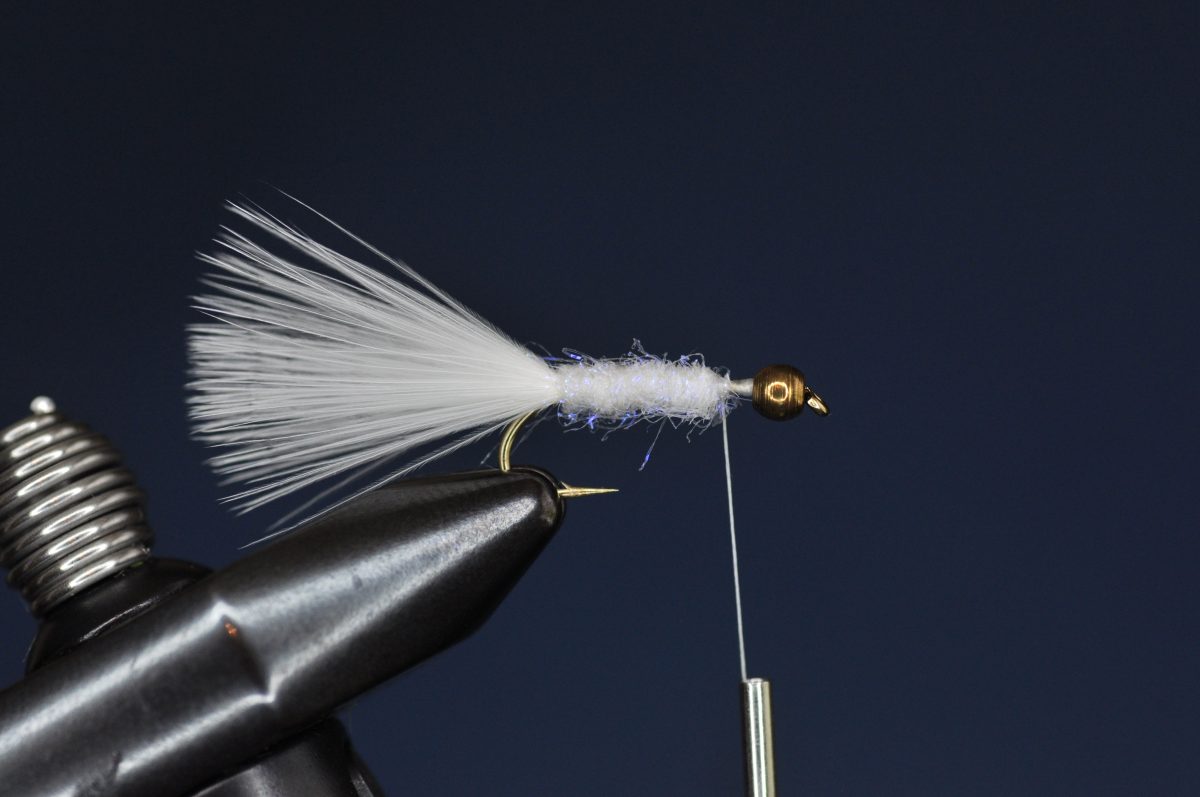

Alternative ties:

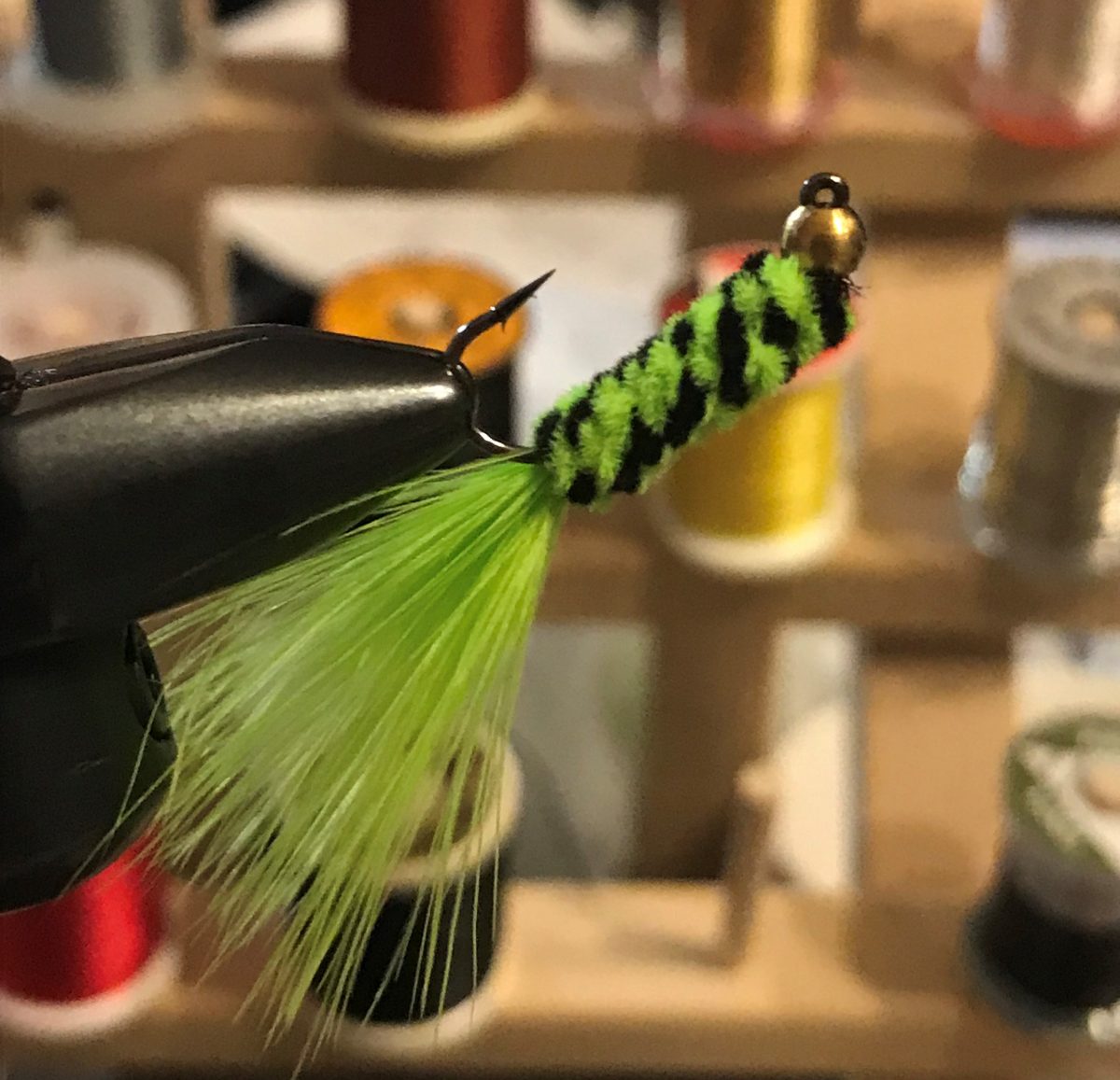
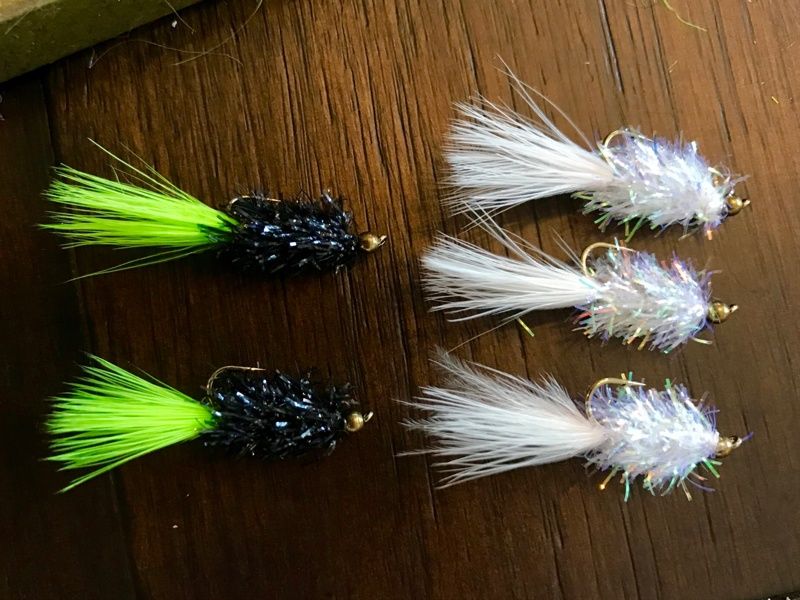
One Feather Fluff Butt – Sometimes simplicity is king. In this fluff butt (tied on a size 12 jig hook), a single tuft of marabou is used to create both the tail and body. After securing the tail, the remaining marabou is twisted into a tight coil, wrapped around the hook and secured with thread at the base of the bead. Optionally, x-small ultra wire can be used to create a segmented appearance.
Twisted Chenille Fluff Butt – Playing on the original crappie jig/fluff butt concept, this version utilizes the traditional chenille body. Instead of sticking to a single color either matching or contrasting with the marabou tail, however, this version is created by tying in two strands of chenille at the bend of the hook and twisting prior to wrapping the shank. The pattern produced will depend on how tightly the two strands are wrapped.
Estaz Fluff Butt – For a thicker bodied, flashier Fluff Butt, consider substituting Estaz or Ice Chenille as a body material. Be careful though, this material seems to trap a bit of air, and I’ve had issues with this pattern occasionally floating on me in the past. A tungsten bead or lead-free wraps around the shank should help prevent this though.
Proof of Concept:
A week removed from landing my personal best crappie, I rose early and slipped my well-worn Malibu Mini X into the Blind River. Armed with my Echo 3-wt and a selection of Fluff Butts, I began working my way down river.
Alternating between the above patterns, I targeted flooded cypress knees, the edges of lily pads and the deeper channel.
Though the morning started slow, the strikes began to come as I switched to the pink and white Ice Dub pattern that had been recommended to me. The first was a surprise catfish as I dead drifted the deep channel, followed by warmouth as I worked the lily pads. Turning my attention to the cypress knees and stumps, red spotted sunfish made an appearance as well. And finally, as I neared my launch spot, my lifer crappie.
In all, I landed six species of fish from the Blind River over the following week. And have since tallied Largemouth Bass, Spotted Bass and Green Sunfish on this pattern as well. Needless to say, it turned out to be an excellent recommendation.
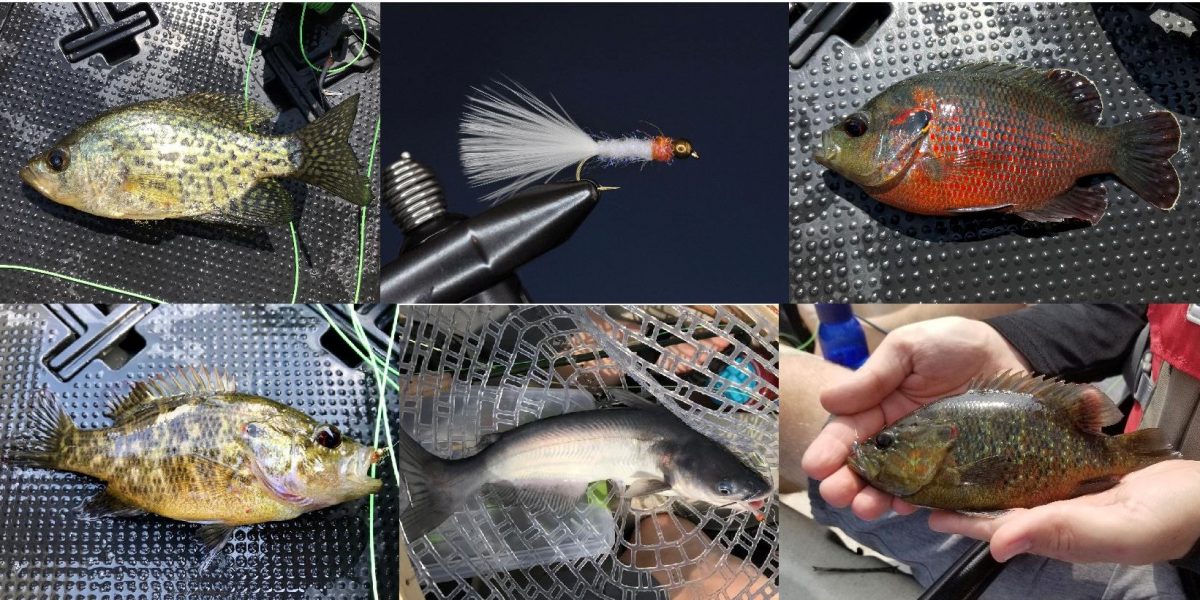
Tight lines everyone!
Chris

Fluff butt is probably my most versatile warm water pattern, catching bass, crappie, all varieties of bream, bass, and catfish (an occasional chou pique and even shiners) 🙂
Choupique is high on my list in 2021! Good to know they’ll occasionally fall prey to a Fluff Butt as well.